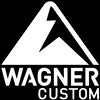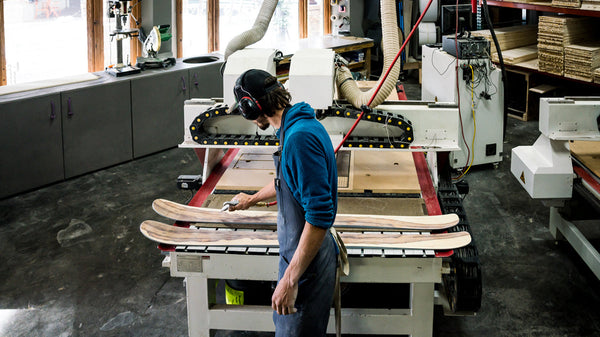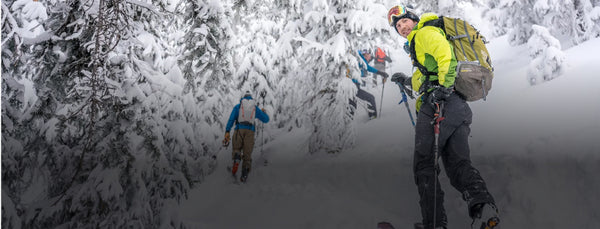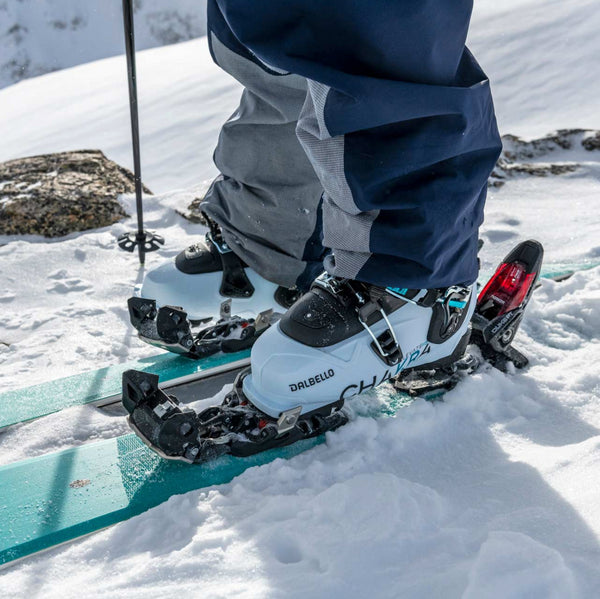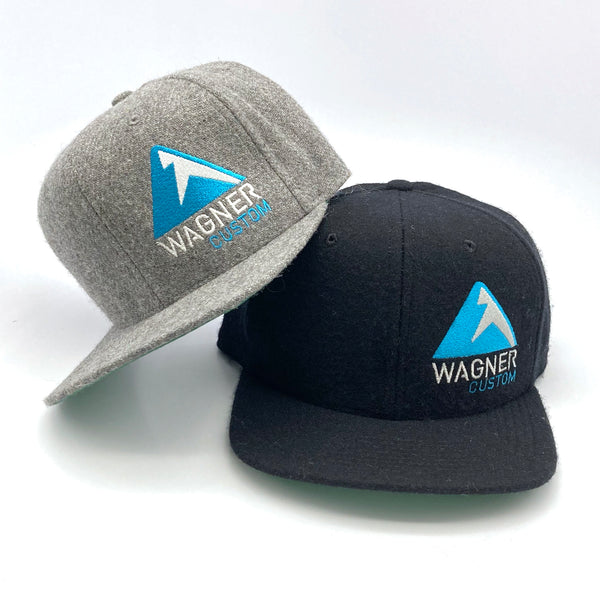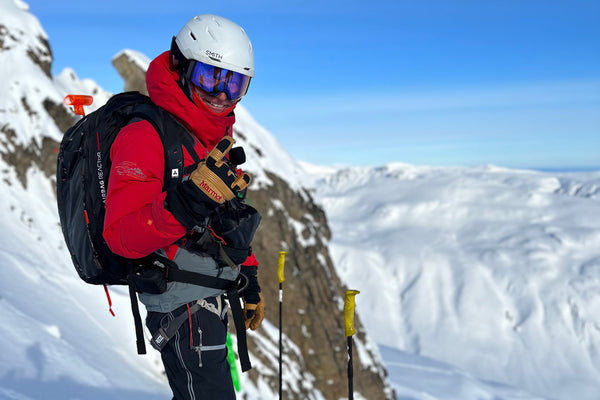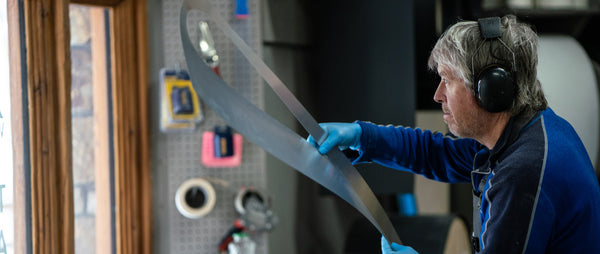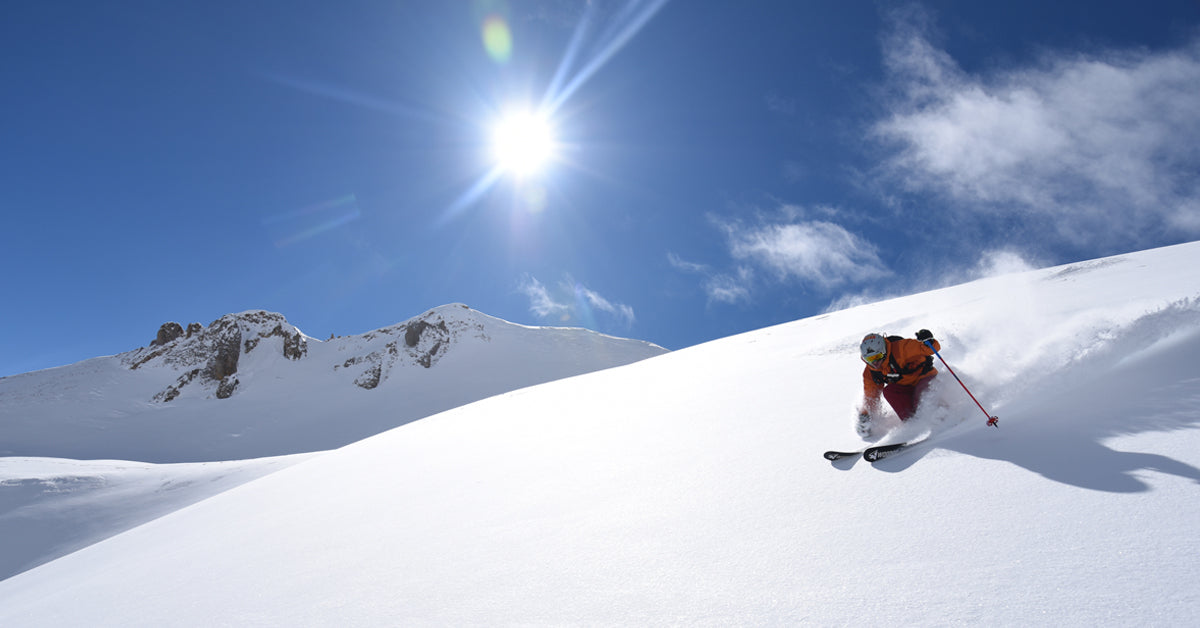
Binding Basics for the Ski Buyer
Bindings are usually the thing skiers think about the least. But if you prefer your legs unbroken and knees pointing in the right direction, you understand they’re the most important piece of equipment you own.
Buying them, however, is not all that intuitive.
Wagner Custom sells Marker and Salomon bindings, but we’re also happy to put on whatever binding you want. Here’s a little primer on what you need to know.

The right bindings will compliment your setup.
System Bindings
Most purely carving and entry-level skis come with bindings that are integrated into the ski. Wagner Customs do not come with system bindings, so the world is your oyster.
Resort-only bindings
These are bindings made to only go downhill. They do not have a walk mode, and the weight of the binding is not that important because you won’t be hauling them uphill.

If you don't have to walk uphill, the weight of your bindings isn't as important.
When you’re looking at different binding models, you’ll see numbers next to the names in most cases. That number is the highest DIN, or release value on the toe and heel, that binding goes up to, and bindings get more expensive the higher the DIN. If you don’t know what your DIN is off the top of your head, look at the little window in your current bindings to tell what your number is. This number is higher for heavier people and experts. (Usually only people who weigh 250 pounds or more or are high-level racers need a binding with a DIN higher than 14.) If you’re still on the learning curve, opt for a binding that has two to three more numbers above your current DIN to give you room to grow.
Next, you need to choose your brake width. To do this, you need to know the waist-width of the skis you’re mounting. This is the middle number in the ski’s listed dimensions, i.e., if the ski’s dimensions are 126-88-108, that means its waist-width is 88 mm. You need a brake that is 88 mm or wider, but be careful not to go too wide (no more than 12 mm), or else your brakes will get caught up in your ski pants.

Photo: divein.com
Finally, it's important that you buy a binding that is compatible with your boots. If you have relatively new alpine boots, chances are they have GripWalk soles, which are a rockered rubber sole that makes it easier to walk through an icy parking lot. If you do have GripWalk, look for the little GripWalk icon on the binding toe or check to see if it has adjustable anti-friction device (AFD). GripWalk bindings can be used for most non GripWalk alpine boots as well, but if you’re not sure, it’s best to ask your local shop.
To get the most flexibility with your choice of boots, opt for a binding that is labeled MNC (multi-norm compatible). MNC bindings are designed to work with GripWalk boots, the now discontinued Walk-to-Ride boots, traditional alpine boots, and alpine touring/hybrid boots.
Check out Wagner's offerings for resort bindings here.
AT bindings

The Salomon Shift binding can be skied both on the resort and in the backcountry. Photo: Salomon
These are bindings that are designed to go uphill and downhill, with a locked-heel ski mode free-heel walk mode. There’s too much technology to go into detail on each kind in this article, but generally speaking there are pin or tech bindings, which have two pins that secure the toe of your AT boot and require specific boots with tech toes; frame bindings, which work with any kind of boot; and hybrid bindings, which can swap between pin and alpine toes. Pin bindings are probably the most common, as frame bindings are slowly being phased out by evolving lighter weight pin technology.
When you’re choosing these bindings, the first thing you need to think about is weight. The lighter the binding is, the easier it is to haul up hills—but the less solid it will feel on the descents. So if your missions are relatively short, you prize the downhill above all else, or if you’re a beast on the skin track, you can probably afford to go a little heavier for skiability sake. If you’re headed out for long summit missions where time is of the essence, go lighter.

Heavy bindings can literally weigh you down when going uphill.
We strongly recommend having a dedicated AT and resort setup, but we get it that your bank account (or garage space) is finite. If you must use one for both, there are bindings—like the Salomon/Atomic/Armada Shift (all companies owned by Suunto make them)—that are specifically designed to do that. The beauty of the Shift is that you can use it with both your alpine and touring boots, thanks to an ingenious mechanism on the toe that switches into pin mode.
Mounting
One of the most important things that skiers don’t pay enough attention to is the mounting point. Chances are, you bring your skis to the shop and they probably don’t even ask you anything about your skiing before they mount your skis. That’s why we at Wagner always prefer to mount the skis we build for you according to your style and preferences.

Herb Manning, Wagner's binding expert, hard at work.
A traditional mount is farther back from center on the ski. This is best for skiers who spend most of their time with their skis on the ground, rather than spinning in the air. A longer tip gives the ski more float in powder and a shorter tail gives it a quicker release.
Park skiers should opt for a center mount—which, technically speaking, is a little rearward of the actual center of the ski—or a mount even farther forward than that. This gives the ski a balanced feel when spinning in the air and skiing switch.

Wagner Team skier Benni Solomon gets some air in the shadows.
The category of skier who needs the most help with their mounting point is telemarkers (yes, they do still exist). A tele ski should be mounted farther back than an alpine ski because it’s pressured by the forefoot when the skier is in a lunge.
There’s a lot more to bindings than meets the eye, so you’ll want to do more research before you purchase your next pair, but at least now you have a general idea of what to look for. If you’d prefer Wagner to take the guess work out of the equation for you on your next pair of custom skis, make an appointment with a ski designer today.
--
Article by Kimberly Beekman
Kimberly Beekman is the former editor-in-chief of the late, great Skiing Magazine (RIP), and a longtime editor of SKI Magazine before that. She currently uses the title of “freelancer” as a beard to ski powder all over the world. She lives in Steamboat, Colorado, with her wonderful daughter and terrible cat.
